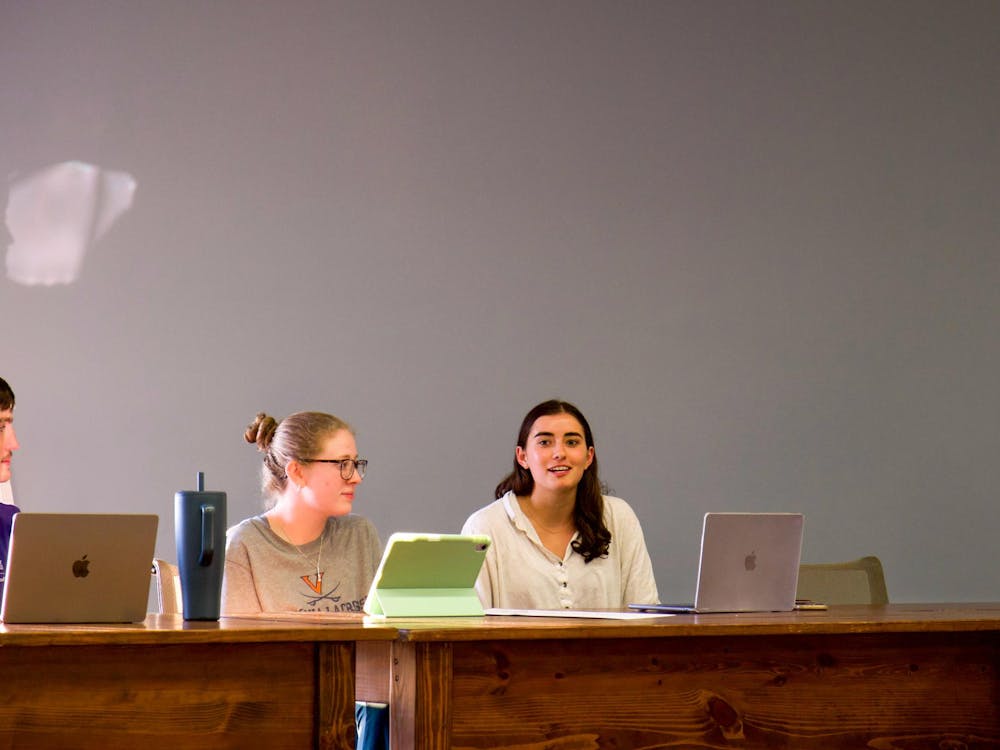The University has a checkered history in its relationship with the black community. On one hand, the first black student did not enter the College until 1961 - on the other hand, the University now has the highest graduation rate for black students compared to any other public university.
The series of assaults committed by Charlottesville high school students against University students, which occurred between September 2001 and January 2002, awoke new interest in racism at the University. Several forums, including "Partying While White," and the annual "Reflections on Complexions" discussion, drew standing-room only audiences of all races.
Though the era of legal segregation rests several decades in the past, remnants of the white-dominated period persist in the University's traditions and customs.
"We've reached a tipping point in race relations at the University," said Tyler Scriven, first-year Architecture student and newly-elected president of the Black Student Alliance. "We're afraid to let go of some harmful elements of the history, and that is impeding our progress."
The History
The first black to attempt to enter the University was a female Virginian who filed a lawsuit for admittance in 1935. Instead of granting her request, the state funded her tuition at an out-of-state school that admitted black students.
Fifteen years later, in 1950, a federal court ruled to allow a black applicant to enter the Law School. But it was not until 1961 that the first black student entered the College.
The black student population remained small for the remainder of the 1960s, and toward the end of the decade, the University began actively recruiting black students.
University President John T. Casteen III said such efforts did not meet as many barriers as expected.
"When we began attempting to recruit larger numbers of African-American students back in the late 1960s and early 1970s, we expected to find suspicion and perhaps hostility," Casteen said. "In truth, very little appeared."
Casteen praised black students for their forward-looking attitude.
Whatever one makes of the University's heritage, prejudice is an unfortunate part of its history, he said. "Determination about making the future rather than approval or disapproval of the past has been the dominant trait of the African-American students whom I have known, although many have talked to me with wisdom and passion about their awareness of the past," he added.
Alumnus Bob Gibson, who attended the University from 1968 to 1972, recalled greater resistance to recruiting black students in this era.
"The University, when I got here in 1968, was a lot whiter and a lot more male than it is now," Gibson said. "The black kids who were here were fully integrated in student life, and yet there weren't that many."
While a student, Gibson visited black high schools and worked to recruit a higher number of black students to apply to the University, with little success.
"I'm not sure if any of the students I talked to even applied," he said. "They didn't know what kind of social atmosphere they'd find here."
Student Organizations
Many people feel that the trouble with targeting institutionalized racism is that it is energized by history, not by individuals. Dean of African-American Affairs M. Rick Turner said in order to combat this unspoken segregation, a proactive effort to recruit minority students is required on the part of universities and student organizations.
"We need to develop a plan for diversity," Turner said. "People would rather you be quiet."
The Jefferson Literary and Debating Society, which was the first student group at the University to allow black students to participate, exemplifies a group that has strived to diversify its ranks in spite of a traditionally "good ol' boy" membership. Like the University, the Jefferson Society presents a contradictory mix between diverse students and a traditional atmosphere. The portrait of General Robert E. Lee hanging in Jefferson Hall, where the society holds its meetings, provides proof of the University's Confederate heritage.
"While the Jefferson Society may have been considered a 'traditional white group' in the past, our membership reflects that this is not the case" today, Jefferson Society President Mohsin Syed said. "Being that this myth does persist, we do make efforts to ensure that before and during interview week, all minority groups are contacted, including African Americans."
Syed said the process of diversification, in the case of the Jefferson Society, required the effort of the entire membership.
"We rely on our own minority members to encourage people to try out," Syed said. "For example, as a Pakistani, I have been able to convince other Pakistanis in the University to try out for membership."
Soul Caf






